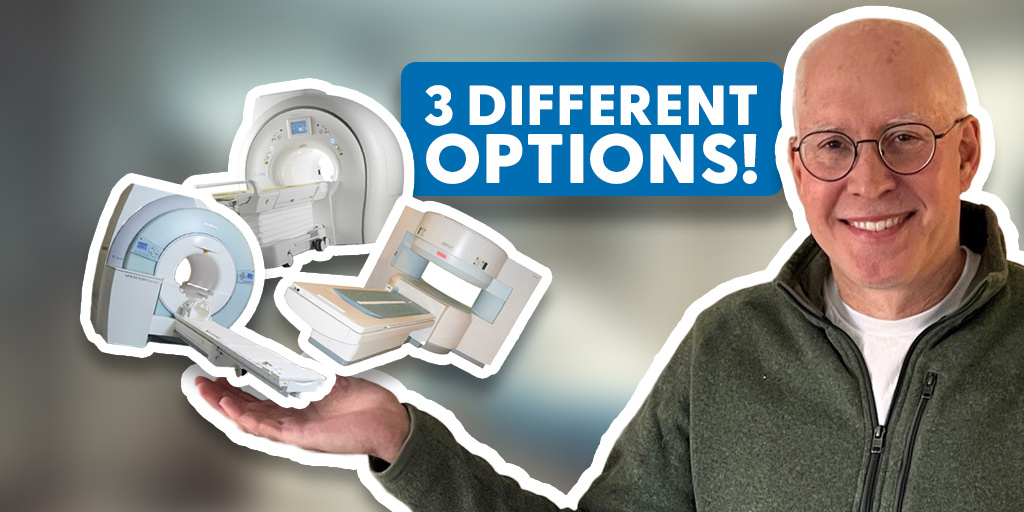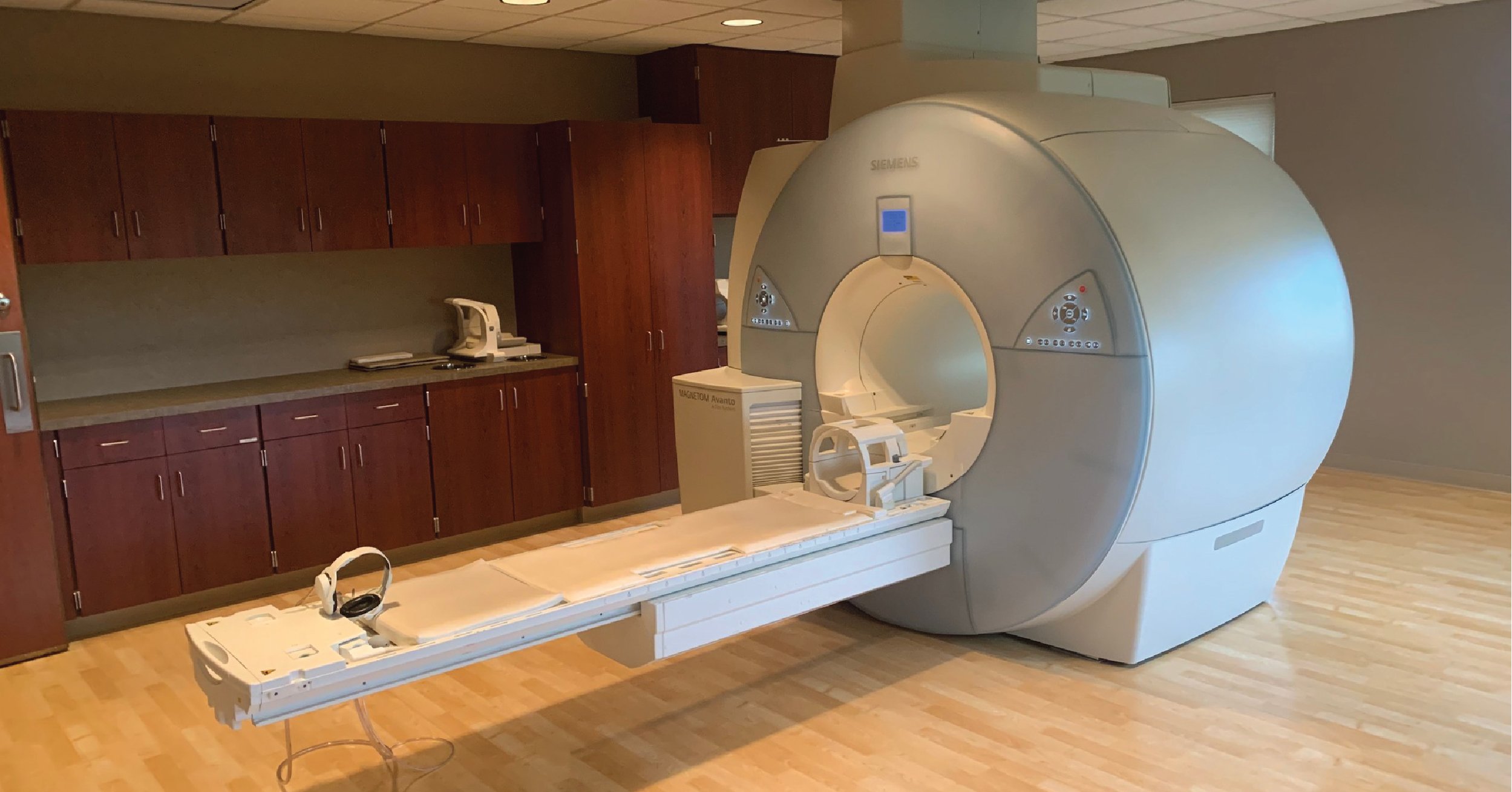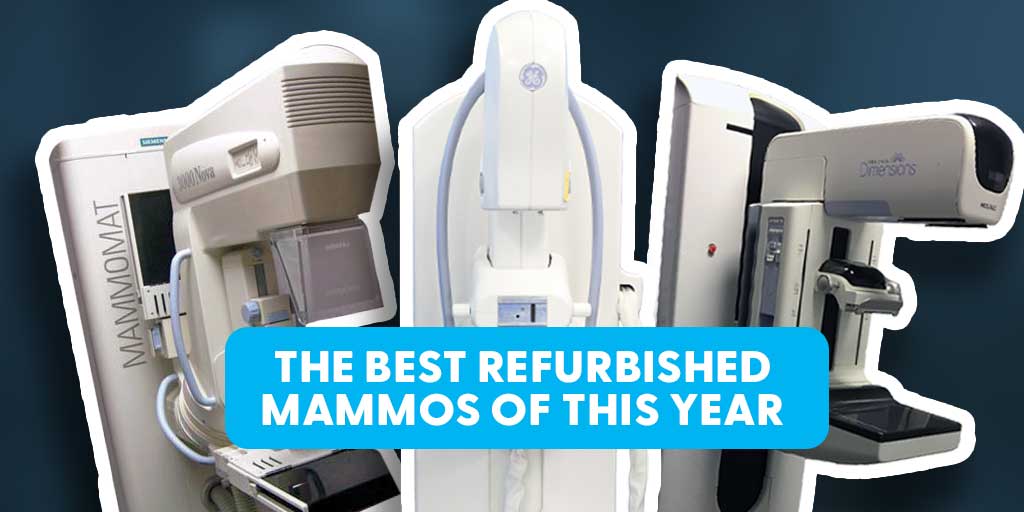
What are the differences between a closed, open, and wide-bore MRI? What’s the best fit for your facility?
With multiple MRI options available on the market, understanding the differences between these systems is crucial.
This system comparison guide addresses key concerns surrounding patient comfort and accessibility, image quality, cost considerations, space requirements, and alignment with patient demographics and needs.
If you’re navigating the realm of MRI systems and find yourself uncertain about these aspects, we’re here to help!
- Closed-Bore: The Standard Option
- Wide-Bore MRI: Balancing Comfort And Quality
- Open MRI: Ultimate Comfort & Specific Scans
- Keep These Factors In Mind
FREE Project Planning Checklist
A step-by-step guide for successfully bringing a new MRI into your facility.
Save yourself months of MRI project delays, headaches and surprises by knowing exactly what to prepare for.
Closed-Bore MRI: The Standard Option
A closed-bore MRI is the most traditional MRI option. It also has the most powerful field magnetic strength. One of the distinctions between a closed MRI and an open MRI lies in the size of the opening where the patient is positioned.
Image Quality
Closed MRI systems typically have magnet strengths ranging from 1.5 to 3.0 Tesla. These strong magnetic fields enable rapid scanning and high-quality images. The shape of the closed MRI allows for detailed images of areas that other systems have difficulty scanning.
Cost Considerations
Closed bore MRIs are generally the most expensive option in terms of purchase price, installation, and maintenance. However, they typically offer the most advanced imaging capabilities. Maintenance and service contracts can run between $1,000–$10,000 per month or $500/hour. Fortunately, Block Imaging offers fully customizable service plans to help reduce unnecessary expenses.
Space Requirements
Closed bore MRIs are typically more compact, which can be advantageous for facilities working with limited space. They still require three separate rooms—scan room, equipment room, and control room—but generally fall within standard suite dimensions.
Patient Demographics and Needs
Closed bore systems are best suited for facilities prioritizing high-resolution imaging. However, the tight tube design can cause discomfort for certain patients, particularly those who are claustrophobic or larger-bodied. Some patients may require sedation to complete scans comfortably.
Facilities serving primarily clinical or research use cases may find the imaging advantages worth the potential trade-offs in patient comfort.
Wide-Bore MRI: The Most Comfortable

There has been a push among manufacturers to continue bringing high image clarity while widening the bore for patients who can't fit in a 60 cm opening or cannot convince themselves to be placed in that opening.
Several manufacturers have responded by introducing “wide-bore” systems into this higher-field magnet category. While these systems don’t create a wider field of view, they do create a more comfortable atmosphere for the patient.
Image Quality
Wide MRI machines combine the spaciousness found in open MRI systems and the high-quality imaging capabilities of closed MRI machines. While the images may not reach the level of detail that a closed MRI can achieve, they are still superior to an open MRI.
Cost Considerations
While wide-bore MRIs tend to cost more than open systems, they provide a solid middle ground between affordability and imaging power. Maintenance and service pricing is similar to closed bore systems, but with added flexibility for patient comfort.
Space Requirements
Wide-bore systems often fit comfortably within the standard 800–850 sq ft MRI suite layout. Still, confirm system dimensions with your vendor to avoid surprises, especially if your facility has unique spatial limitations.
Patient Demographics and Needs
Wide-bore MRIs strike a balance between diagnostic power and patient comfort. With larger openings than closed bore models (often around 70 cm), they serve patients who may feel cramped in traditional MRI machine, such as those with mobility challenges, higher BMIs, or mild claustrophobia.
Open MRI: Ultimate Comfort & Specific Scans 
Open MRI machines have two flat magnets positioned over and under the patient. This is one of its most important features. The extra space increases patient comfort and provides an unobstructed view of the scanning area, rendering them well-suited for specific types of scans, such as brain scans.
Among these systems are generally .2T and .3T magnets with a few systems as high as .7 or even 1.0T.
Image Quality
Although the open MRI provides flexibility and ample space, its magnetic field strength is significantly lower. This, along with its design, poses challenges in generating high-quality images. Due to these limitations, open MRI systems may not always be suitable for certain diagnostic needs.
Cost Considerations
Open MRI systems are typically priced lower than closed or wide bore systems. This is due to both reduced imaging complexity and lower ongoing maintenance costs. Their simplicity and accessibility often make them a more budget-friendly option—especially for facilities serving a broader patient base.
Space Requirements
Open MRI systems usually require more physical space than other types due to their wider, more accessible structure. If you're considering an open bore MRI, be prepared for a larger MRI suite footprint, often exceeding the average recommendation.
Always consult your vendor for precise sizing. Manufacturer specs vary, even within the same bore category.
Patient Demographics and Needs
Unlike closed and wide MRI machines, open MRIs are designed to be extremely spacious and flexible. With three open sides, an open MRI features the largest and least confining design. Two flat magnets are positioned over and under the patient, which reduces patient claustrophobia and makes scans more accessible for patients with limited mobility.
Keep These Factors In Mind
It's helpful to know that maintenance expenses, service, installation, and the initial purchase price contribute to the overall cost involved in acquiring an MRI system.
Depending on your budget and the nature of the studies you perform most often, you have options. As you evaluate them, we suggest that you keep these factors in mind:
- Comfort and accessibility for patients
- The system's capabilities and image clarity
- The overall expense of the system
- Spatial requirements within the facility
- Patient demographics and needs
Overall, an open MRI system is typically priced lower than a closed or wide MRI system, due to its lower maintenance costs and its imaging capabilities. To dive into specific pricing and comparisons, check out our MRI Price Guide.
If you'd like to walk through your options with one of our team members, don't hesitate to reach out!
FREE Project Planning Checklist
A step-by-step guide for successfully bringing a new MRI into your facility.
Save yourself months of MRI project delays, headaches and surprises by knowing exactly what to prepare for.

Steve Rentz
Steve Rentz is the Product Manager for MRI Scanners at Block Imaging. Steve's goal is to earn each customer's trust and business by specifically addressing the needs of their unique project. When Steve is not helping customers with their MRI needs, he enjoys running, swimming, and woodworking.





